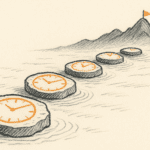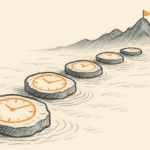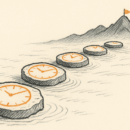Don’t waste time looking for the perfect strategy

When I was starting off in my career decades ago, I really wanted to be a strategy consultant. But there was a problem: how does one learn strategy? There was certainly no subject by that name at universities. It was not taught to any depth in management programmes. So what to do?
Naturally, I taught myself. I bought every book I could find on the subject. I signed up for executive strategy programmes run by elite institutions. I learned all the strategy frameworks of the day. Whatever they were, I knew them. And when the opportunity came to apply them all to real clients in the real world, I did so with gusto. SWOTs and PESTs; Five Forces and Value Chains; Blue Oceans and Strategy Maps. Went there, did that, wore the t-shirts.
There was a problem, though. Did the damn things actually work? Well-thought-out strategies were formulated, sure, but were they ever understood and embraced by their recipients? Did they result in clear action plans, and did change actually happen on the ground?
Not so much.
The reason dawned on me slowly. The teaching of business strategy, and the research that leads to strategy frameworks, is done by academics. The frameworks are then taken to the world and applied by strategy consultants. All very clever people—or so it seems. The flaw in the thinking is the delusion that there is a correct strategy for every situation—if only you are clever enough to generate it. If your analysis is rigorous enough, if you can apply appropriate strategy models with precision, and if you can predict the actions of customers and competitors with intelligent foresight, then bang—you have a winning strategy. Just by thinking it into being.
Not really.
The more time I expended with real people in real companies trying to formulate real strategies, the more I understood the dangers inherent in this perfectionism. Despite having spent decades in the swamps and trenches of strategy, I cannot point out a single successful one that emerged from a process of clinical intellectual analysis alone.
Enter Henry Mintzberg, renowned management professor at McGill University, and a true strategy contrarian. He said this: “Nobody in the history of the earth has ever planned strategy through a set of analytic techniques.” I had the honour of meeting and introducing professor Mintzberg to an audience at Strathmore Business School some years ago. We had some very stimulating discussions about the true nature of strategy.
There are two things to understand about real-world strategy. The first is that it really isn’t about matching resources to opportunities, capabilities to markets. It is, most of the time, just a form of trial and error. You do your best thinking, take a chance on something—and then learn from the process. In other words, strategy is iterative. It is not perfected in the boardroom; it is improved and refined as truth is discovered in the market. Henry Mintzberg again, with his talent for the enduring soundbite: “Strategies grow initially like weeds in a garden, they are not cultivated like tomatoes in a hothouse.” You have to get going with what you have and what’s already worked, on the best information available, using your best judgement. And then improve on it, using new information as it emerges, with fingers crossed all the way.
A second problem with analytical strategy is that it ignores the human element. Out in the world, strategy is done by people with people. People not only have to design the strategy, they also have to embrace it, commit to it, own it, even love it. How do you make people have those feelings? That’s something almost never taught to us. We learn it by learning people, and the only way to learn people is by being with them—interacting, observing, flinching, laughing, and crying.
“A sharp mind in touch with the situation” is what Henry Mintzberg says you need. To which I would add: and an empathetic heart, in touch with the emotions surrounding the situation. Strategy must be felt, not just formulated.
I try to bring these elements together in my book about strategy, Up & Ahead. To do strategy, all you need is a loose framework, designed not to bind your thinking but to open it up, and a proper understanding of what makes your fellow humans tick. Then, strategy can be understood, formulated, and executed by a group much wider than the academic and consulting elite. It can even be fun, energising, and creative, rather than formulaic and predictable. Humans respond to stories, and the best strategy is a narrative with a plot and lively characters—but it’s an improv, not a block of scripture that cannot be refuted.
Ultimately, the best strategies will emerge from organizations that are true communities—where people are energised by a sense of belonging. Organizations that create meaningful, productive connections between people, that have a strong social glue and a special culture—those are the ones that will generate strategies that have a good chance of being the winning ones. The best strategies are not concocted in classrooms, boardrooms, or executive retreats, but by bringing an observant mind to the dailyness of human interaction.
(Sunday Nation, 26 May 2024)

Buy Sunny Bindra's new book
The X in CX
here »
Popular Posts
- Where are you rushing to—your funeral?June 29, 2025
- How to spot a real thinkerJune 15, 2025
- The map will appear—once you start walking.July 6, 2025
- Built the app, forgot the flowJune 22, 2025















